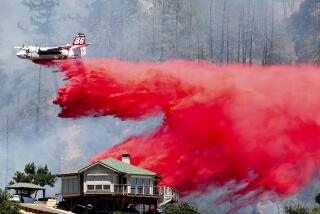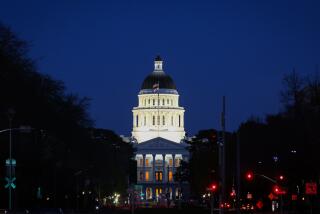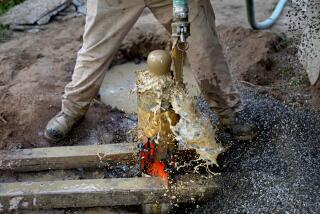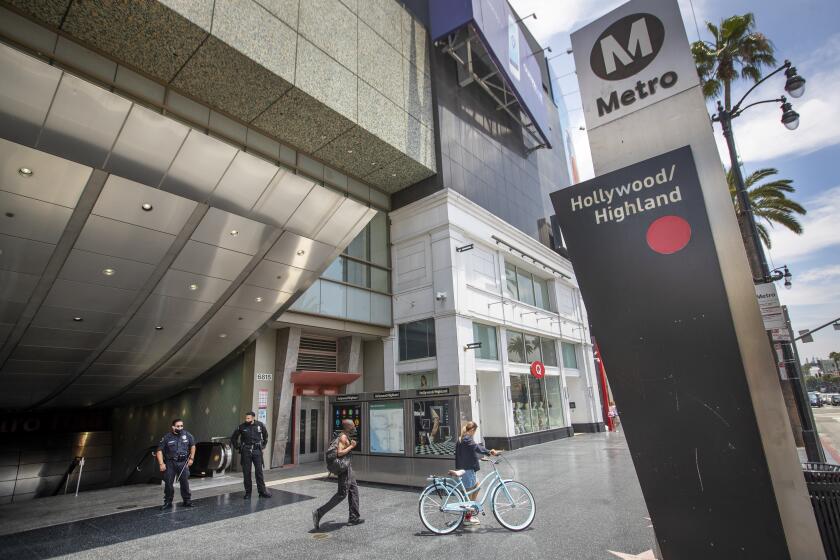Water bond would spread money across the state — but pour it on the Central Valley
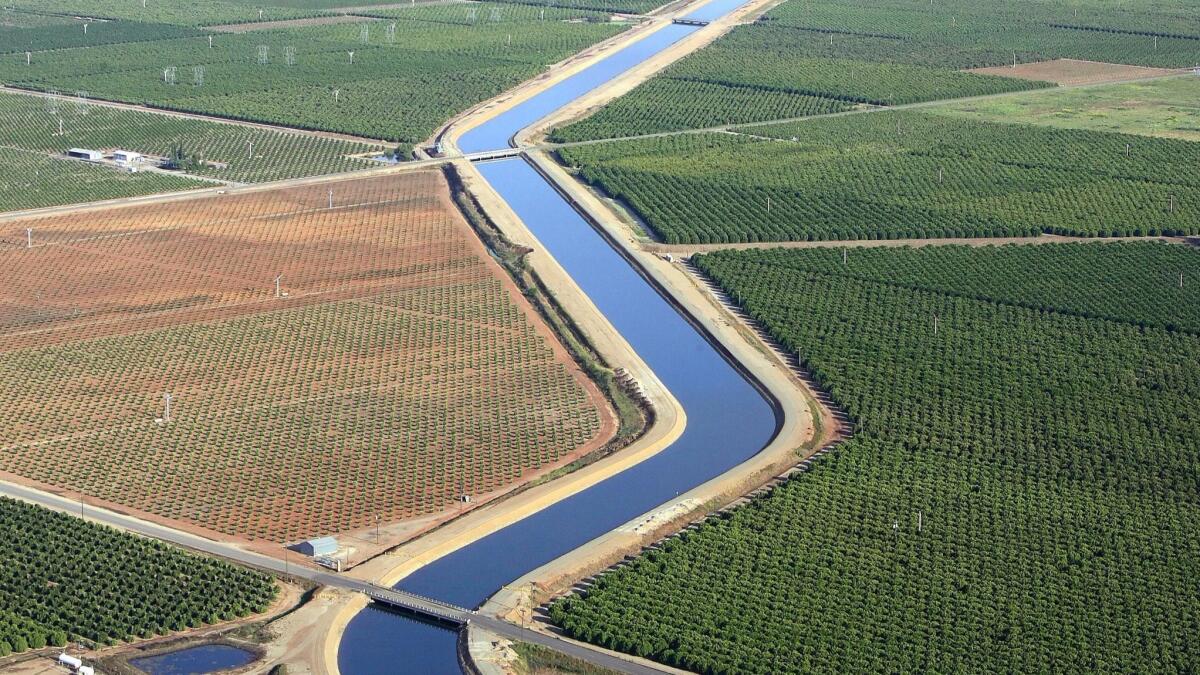
Excessive groundwater pumping by San Joaquin Valley farmers has caused a stretch of the Friant-Kern Canal to sink so much that it has interfered with irrigation deliveries to more than 300,000 acres of cropland.
A fix could come from Proposition 3, the water bond on the November ballot, which earmarks $750 million in state taxpayer funds to repair the aqueduct and other infrastructure damaged by land subsidence.
But the state neither owns nor uses the Friant-Kern. It is part of the Central Valley Project — the federal government’s massive irrigation system.
At $8.9 billion, Proposition 3 is the latest — and biggest — in a series of water bonds to go before California voters since 2006. Its largess would spread up and down the state, but the measure asks state taxpayers to subsidize Central Valley agriculture to an unprecedented degree.
Whether it is the cost of repairing the Friant-Kern and other federal canals, $675 million for groundwater management or a host of smaller programs, valley farm districts stand to reap several billion dollars’ worth of direct and indirect benefits from the bond.
The measure was put together by Jerry Meral, a veteran of California water politics who drafted the 39-page initiative based on the desires of a cross section of interests.
“This is definitely a group effort. We worked with every constituency you could imagine,” said Meral, a former state natural resources official who directs the water program for the nonprofit Natural Heritage Institute. “It’s a well-thought-out response to a huge need for water in California.”
The initiative has a $5-million campaign fund, fattened with donations from agricultural interests, and no organized opposition to speak of.
But it has some very vocal critics, who have called it “horrifying,” “garbage” and a “giveaway” that violates a long-standing principle in California: Those who use water infrastructure should pay for it.
“There are a few bright lines in California water and this bond has stepped over a big one,” said Ron Stork, senior policy advocate of Friends of the River, an environmental group. “It provides direct subsidies to state and federal [water] contractors on scales and types of projects that we haven’t seen before.”
In addition to the pot of money for the Friant-Kern, he pointed to $200 million for repair of the Oroville Dam spillways. The Northern California dam is a key element of the State Water Project, which is paid for by its largely urban users.
The Legislative Analyst’s Office estimates that when interest and principal payments are factored in, Proposition 3 will ultimately cost state taxpayers $17.3 billion.
In a departure from most water and environmental bonds, the funds would not be appropriated by the Legislature in annual state budgets. Rather, the money would automatically go to state agencies to distribute in the form of grants, as needed for specific projects.
“Who’s doing the oversight?” said Kathryn Phillips, director of Sierra Club California. “Since when did the state taxpayer pay for federally approved and managed projects?...The deeper you go, the more horrifying it is.”
State Senate leader Toni Atkins (D-San Diego) has endorsed the initiative. Assembly Speaker Anthony Rendon (D-Paramount) opposes it, calling it “garbage — nothing but pet projects.” Gov. Jerry Brown has not taken a position.
To garner statewide support, bond measures are inevitably written with California’s sprawling geography in mind. Proposition 3 is no exception, funding programs that appeal to both urban and rural residents in the north and the south.
There is money for wastewater recycling, flood control and Salton Sea restoration. The measure directs $750 million to safe drinking water projects, with an emphasis on improving public water systems in poor communities.
Projects to capture urban runoff and stormwater would receive $400 million. Conservancies would collect hundreds of millions of dollars for watershed protection and restoration projects — including on U.S. Forest Service lands. The Santa Monica Mountains Conservancy is in line for $60 million; the Santa Ana River, $30 million; the San Gabriel and Los Angeles rivers conservancy, $60 million.
But the initiative is heavily salted with programs that would benefit one slice of the state: Central Valley agriculture.
The $675 million in groundwater management grants would help valley growers comply with California’s new groundwater law, which mandates an end to serious over pumping by 2040.
The bond sets aside $400 million for restoration of Central Valley fisheries and directs the State Water Resources Control Board to “take note of the funding” in setting instream flow requirements. Growers are bitterly fighting the proposed standards because they would force irrigation districts to leave more water for fish in San Joaquin River tributaries.
Other bond sections include grants to local agencies to improve fish passage and install fish screens on Central Valley rivers. That would help agricultural diverters meet environmental requirements — and lessen their costs of doing so.
The Wildlife Conservation Board would receive $300 million to buy water to improve fish and wildlife conditions. Farm districts are the likely sellers.
The wildlife board would also get $20 million for construction of a Pacific Flyway Center “to educate the public about the importance of California’s wetlands, agricultural lands (including rice) and riparian areas in benefiting waterfowl.”
The $750 million for canal repairs would go to the Friant Water Authority, which represents the city of Fresno and 14 irrigation districts supplied by the Central Valley Project. Deep and wide enough to float a destroyer, the 152-mile Friant-Kern carries water down the east side of the San Joaquin Valley from Friant Dam. The 35-mile Madera Canal runs north from the dam. Together, the two federal aqueducts, built in the 1940s, divert virtually the entire flow of the upper San Joaquin River.
Parts of the Friant-Kern have sunk three feet in the past three years. Similar problems arose during the 1977 state drought, when growers ramped up groundwater pumping.
In that case, the U.S. Bureau of Reclamation spent $60 million on repairs and recouped the cost in water sales to Friant Division irrigators.
Jason Phillips, the water authority’s chief executive officer, said his agency has asked the bureau for repair money but has so far gotten a mere $2 million.
It will cost as much as $450 million to fix the subsidence problems by raising bridges and canal banks, Phillips said. He added that the rest of the grant would be used to improve conveyance systems linked in some way to the two main aqueducts.
The water authority has attributed the subsidence to a jump in groundwater use during the state’s prolonged drought, when federal irrigation deliveries were slashed and Friant growers turned to their wells to keep their crops green.
But land near the Friant-Kern continued to sink an inch a month last year, when the drought was over and project deliveries were plentiful.
“This is not a drought-related phenomenon,” said Michelle Sneed, a land subsidence specialist with the U.S. Geological Survey.
The authority is trying to determine whether groundwater pumping miles from the aqueduct is contributing to the subsidence. “We’ve got to fix the canal but we can’t have it sinking this fast,” Phillips said.
As for why state taxpayers should pick up a big bill to repair facilities that the state doesn’t own, doesn’t use and didn’t damage, he replied, “Does farming in California help you?”
Twitter: @boxall
More to Read
Start your day right
Sign up for Essential California for news, features and recommendations from the L.A. Times and beyond in your inbox six days a week.
You may occasionally receive promotional content from the Los Angeles Times.
